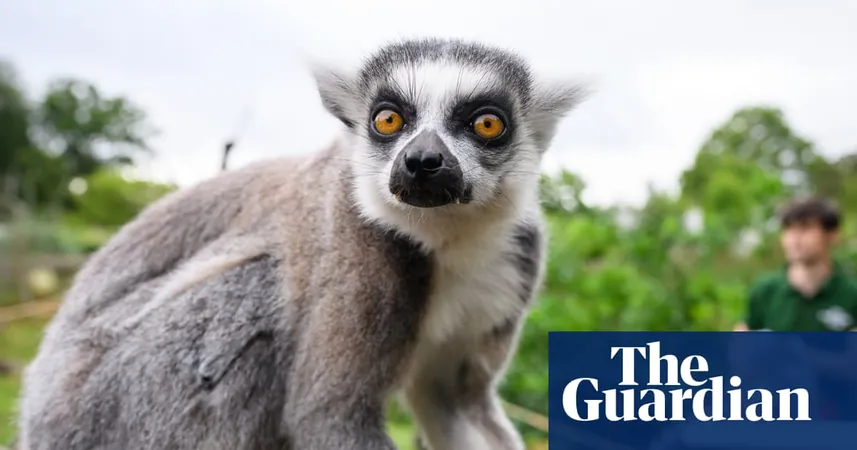
Unlocking the Connection: Longer Thumbs and Bigger Brains in Primates!
2025-08-26
Author: Jessica Wong
A Surprising Link Between Thumb Length and Brain Size
Big hands may not be the only feature signaling intelligence; new research suggests that longer thumbs are intricately connected to larger brains in primates. This discovery opens new avenues to explore how brain development and manual dexterity evolved together.
Dr. Joanna Baker, the lead researcher from the University of Reading, theorizes that as primates became smarter, they developed enhanced manual skills—leading to a greater capacity for action planning and effective tool use. "Primates with longer thumbs are likely more adept at manipulating objects, which naturally correlates with increased survival and success,” she explains.
The Evolutionary Importance of Opposable Thumbs
While opposable thumbs have long been praised for their role in human evolution—allowing for complex grip and tool use—this study reveals that thumb length itself plays a crucial role, too. Baker and her team examined the thumb lengths and brain masses of 94 primate species, from ancient hominins to lemurs, uncovering fascinating patterns.
The results, published in the journal Communications Biology, showed that humans and other hominins possess thumbs significantly longer than the average for their hand size, and this is linked to a relative brain enlargement.
A Universal Trend Among Primates
Baker’s analysis indicates that in the primate world, there’s a striking correlation between thumb length and brain size—if your thumb is longer, your brain is usually bigger, regardless of the species. However, the early hominin Australopithecus sediba diverged from this trend, boasting a remarkably elongated thumb even when accounting for its brain size, hinting at adaptations for both arboreal and terrestrial life.
Neocortex: The Brain's Powerhouse for Cognition
Interestingly, the research points to the neocortex—responsible for higher cognitive functions—as the brain region that expands in primates with longer thumbs. This finding surprised researchers like Baker, as one might expect other motor regions, such as the cerebellum, to play a more prominent role in this relationship.
Beyond Thumb Length: Complexity of Tool Use
Despite these significant findings, the researchers caution against oversimplifying the story. The study doesn’t fully support the idea that thumb length alone can delineate tool-using species from non-tool users—indicating that the dynamics of evolution are far more complex than previously thought.
Dr. Fotios Alexandros Karakostis, an expert in biological anthropology at the University of Tübingen, noted that while this research indicates co-evolution between hand and brain adaptations, a complete understanding will require more in-depth investigation into other important hand features and the intricate neural systems governing manual dexterity.
As we continue to unravel the mysteries of primate evolution, one thing is clear: our thumbs may wield more power than we think, shaping not just how we grip tools, but also how we think.

 Brasil (PT)
Brasil (PT)
 Canada (EN)
Canada (EN)
 Chile (ES)
Chile (ES)
 Česko (CS)
Česko (CS)
 대한민국 (KO)
대한민국 (KO)
 España (ES)
España (ES)
 France (FR)
France (FR)
 Hong Kong (EN)
Hong Kong (EN)
 Italia (IT)
Italia (IT)
 日本 (JA)
日本 (JA)
 Magyarország (HU)
Magyarország (HU)
 Norge (NO)
Norge (NO)
 Polska (PL)
Polska (PL)
 Schweiz (DE)
Schweiz (DE)
 Singapore (EN)
Singapore (EN)
 Sverige (SV)
Sverige (SV)
 Suomi (FI)
Suomi (FI)
 Türkiye (TR)
Türkiye (TR)
 الإمارات العربية المتحدة (AR)
الإمارات العربية المتحدة (AR)